Secret Tricks for Getting a Fitter Body After 60, According to Science
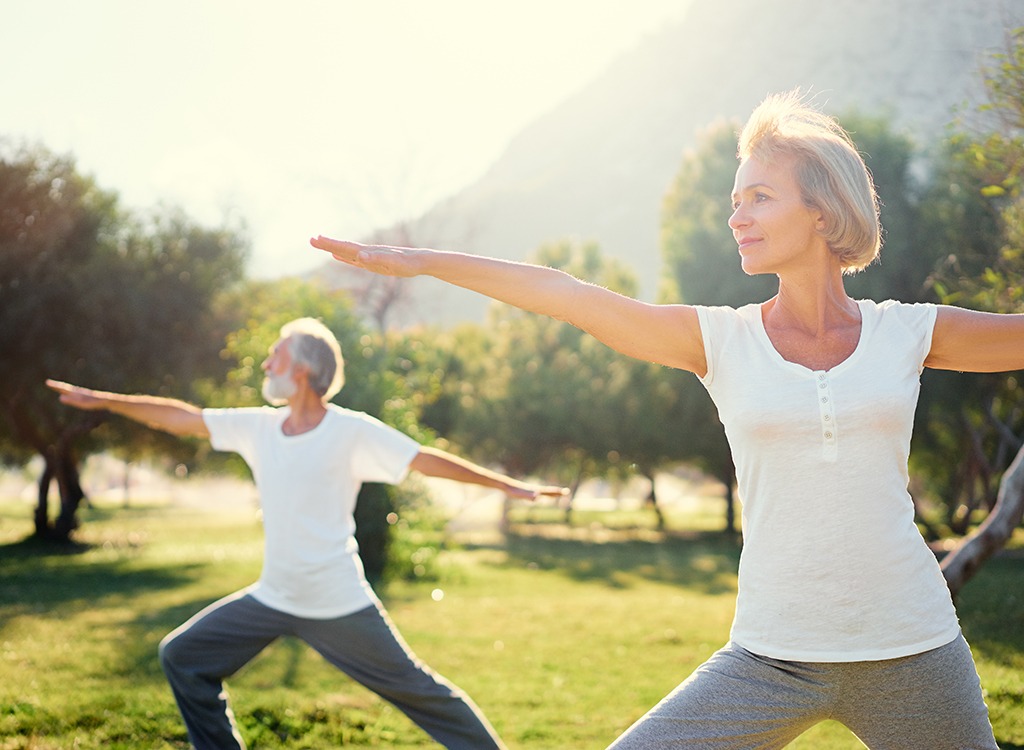
It’s never been a better time to grow old. On average, seniors and older adults all over the globe are living longer. The WHO even estimates that in about eight short years one in 6 adults on our planet will be aged 60 or older! Similarly, a study published in The Proceedings of the National Academy of Sciences concludes the median human lifespan is increasing by roughly three years every generation.
Even better, not only are older adults living longer but they’re also in better shape than their parents and grandparents before them. Research published in The Journals of Gerontology found that current older adults are in better shape from both a physical and mental health perspective than their predecessors 30 years prior. As far as why this is the case, 21st-century living is simply more conducive to a healthier lifestyle. “There have been many favorable changes. These include better nutrition and hygiene, improvements in health care and the school system, better accessibility to education and improved working life,” explains researcher Matti Munukka from the University of Jyväskylä.
All of this just goes to show how antiquated and inaccurate it is to consider old age an excuse to stop moving and exercising. Even if you’ve personally been neglecting your physical fitness for your entire life, it’s quite literally never too late to start sweating. A study published in Frontiers in Physiology discovered that seniors (ages 70+) who had never committed to a consistent exercise routine were just as capable of building new muscle as much more athletically seasoned individuals of a similar age.
So what are you waiting for? A fit, toned, and functional body is well within your grasp—even if your 60th birthday has long passed. Read on to learn a few helpful tricks that can help you get a fitter body after 60, according to research. And next, don’t miss the 3 Major Secrets to Living to 99, According to Betty White.
Remember resistance training
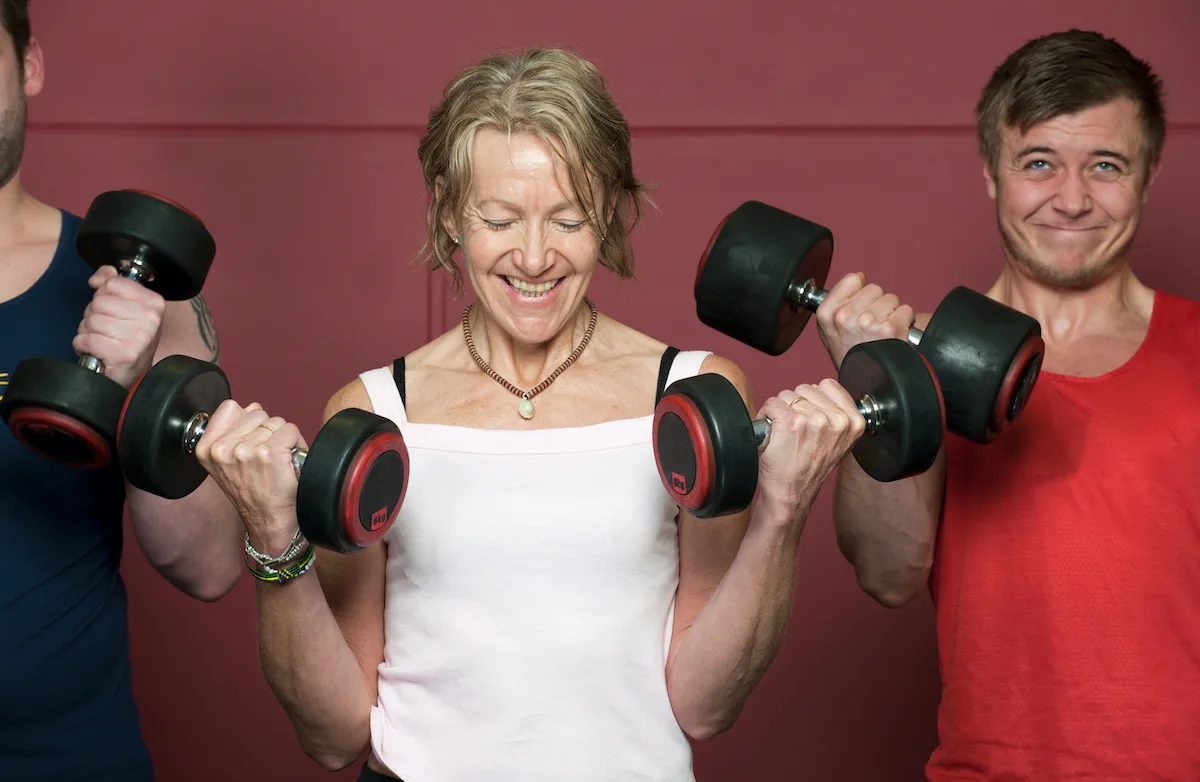
If the first item on your fit body agenda is to lose some unneeded excess weight, don’t make the mistake of focusing solely on cardio when it comes to the exercise portion of your plan. Sure, aerobic exercise is great for weight loss but cardio can also lead to the additional loss of much-needed muscle, especially when paired with a new calorie-restricting diet. Muscle loss to a certain extent is a natural part of growing older, which is why it’s important to prioritize some resistance training/weight lifting.
Adding in some weight lifting to your routine will help you maintain and build muscle while simultaneously burning calories. This study, published in Obesity, separated a group of obese older adults into three fitness groups. One portion went on a diet and started lifting weights, another went on a diet along with a cardio regimen, and the third group only went on a diet with no exercise mandates. Notably, participants who performed cardio ended up losing much more body mass (muscle) than either of the other groups. The weight-lifting group shed the most fat, however. These findings indicate eating right and engaging in regular weightlifting is the best way for older adults to burn fat and maintain lean muscle mass.
“Surprisingly, we found that cardio workouts may actually cause older adults with obesity to lose more lean mass than dieting alone,” says lead researcher Kristen Beavers from Wake Forest University. “A lot of older adults will walk as their exercise of choice. But this research shows that if you’re worried about losing muscle, weight training can be the better option.”
Related: Sign up for our newsletter for the latest health and fitness news!
Stay consistent & motivated
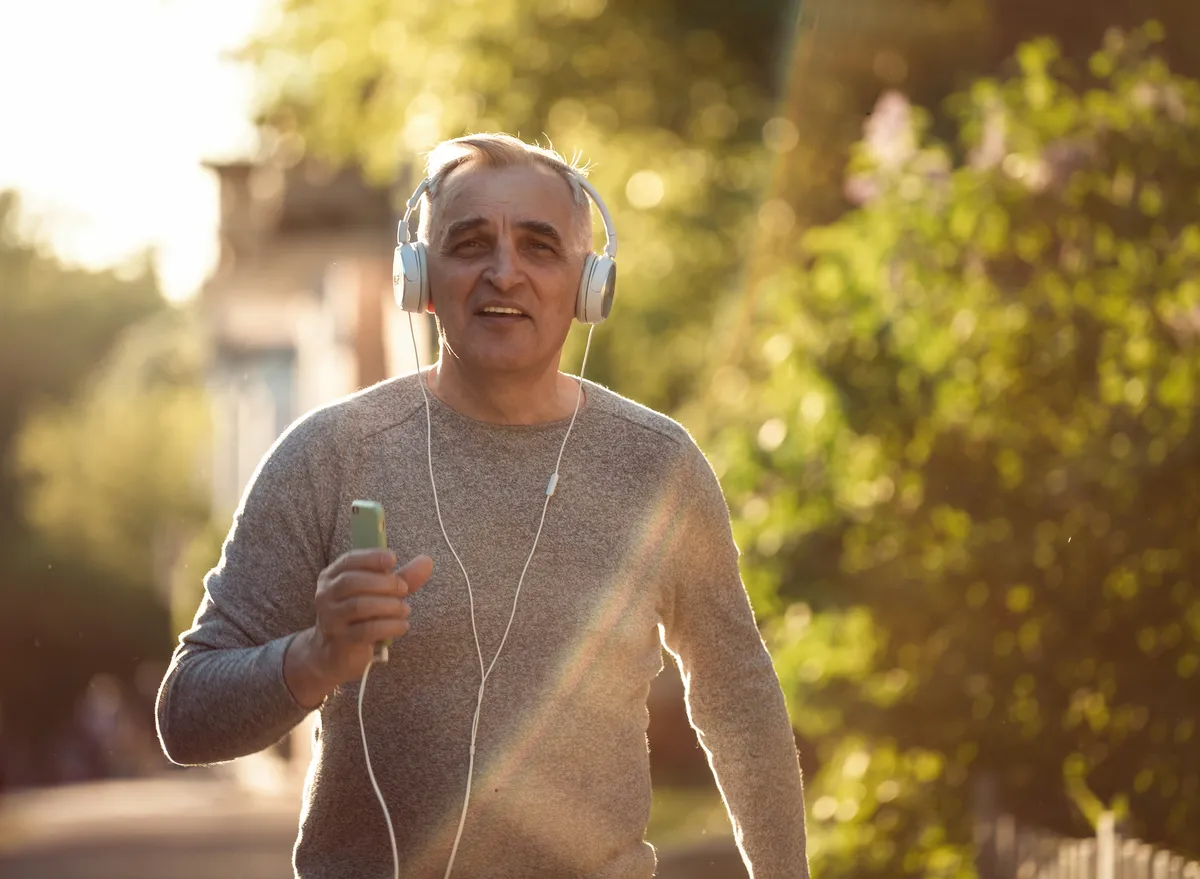
Like so much else in life, another key to personal fitness success is consistency. Many avid gym-goers will tell you that if “you don’t use it, you lose it” and that’s especially true for older adults. One research project from The Physiological Society reports that all it takes is two weeks of “reduced physical activity” for older adults to see significant loss of muscle and extra weight gain. Moreover, even the muscle mass that remained after two weeks of stagnation showed signs of serious weakening.
So what’s the solution? That study’s authors recommend that all older adults try their best to get in at least 10,000 steps per day. Maintaining this level of daily activity should be enough to avoid such developments.
“The severe impact of short-term inactivity on our health is hugely important to communicate to people. If the gym is hard to get to, people should be encouraged to just meet 10,000 steps as even this can guard against reductions in muscle and bone health, as well as maintaining healthy levels of body fat,” study author Juliette Norman comments.
It isn’t always easy to stay active day in and day out, which is why it’s just as important to stay motivated. The Journals of Gerontology recently published an entire supplemental issue dedicated to the importance of motivation for healthy aging. Study authors wrote “taken together, the collection of papers in this supplement illustrates the central role of motivation for healthy aging.” Only you can answer what gets you out of bed each day, but the next time you’re feeling extra lazy try to keep your main motivators in mind.
Related: The Best Way to Instantly Improve Your Workout Performance, Science Says
Try yoga
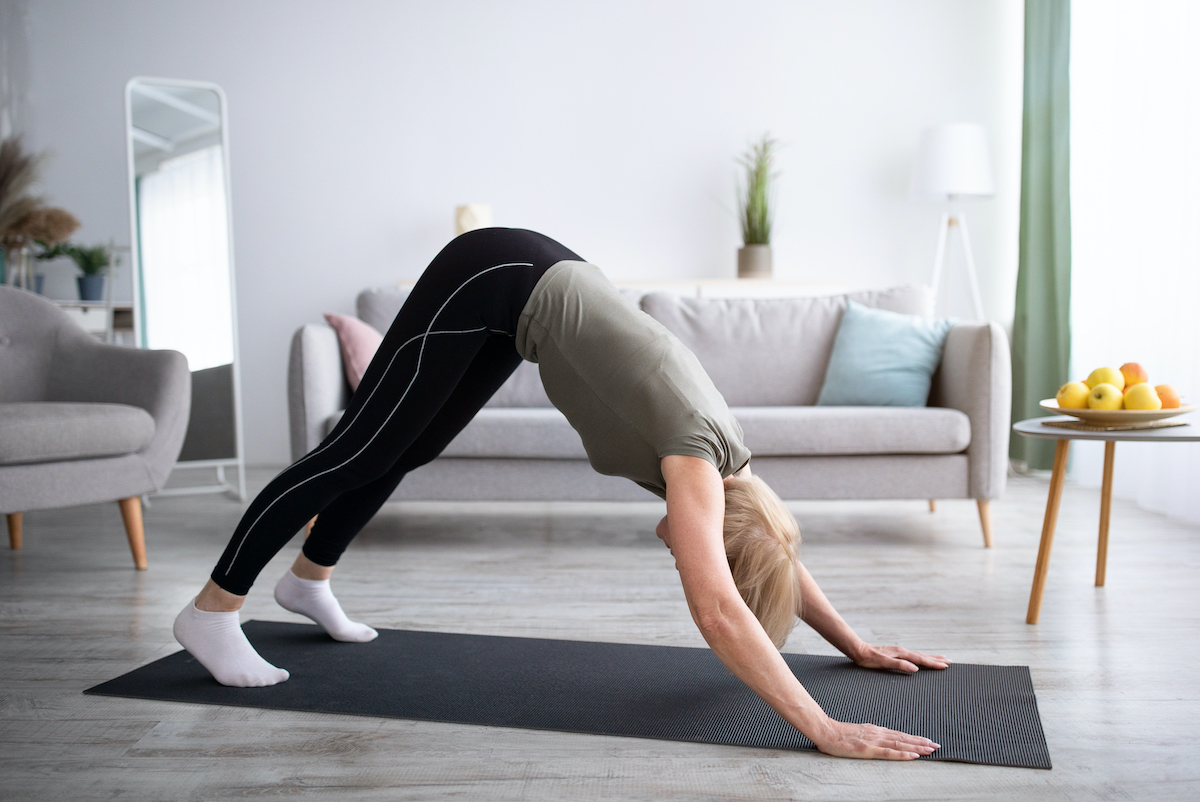
Yoga may appear intimidating, but it’s an activity well worth trying out. Plenty of research tells us that practicing yoga offers a world of fitness benefits for older individuals. This review of 22 prior relevant research projects published in the International Journal of Behavioral Nutrition and Physical Activity finds that among adults over the age of 60 yoga helps promote improved flexibility, balance, vitality, leg strength, and overall physical health. When paired with traditional exercise and dieting, practicing yoga a few times per week can be a powerful supplementary fitness asset.
“A large proportion of older adults are inactive, and do not meet the balance and muscle-strengthening recommendations set by government and international health organizations. Based on this study, we can conclude that yoga has great potential to improve important physical and psychological outcomes in older adults. Yoga is a gentle activity that can be modified to suit those with age-related conditions and diseases,” notes study co-author Divya Sivaramakrishnan
Another study published in BMC Geriatrics compared the physical health of a group of older adults who had been practicing yoga for three months with a control group. Sure enough, the yoga group performed much better on a series of physical tests measuring fitness, functioning, and flexibility.
Related: Explosive New Study Says Exercise Can Stop Cancer In Its Tracks
Don’t be afraid to get intense
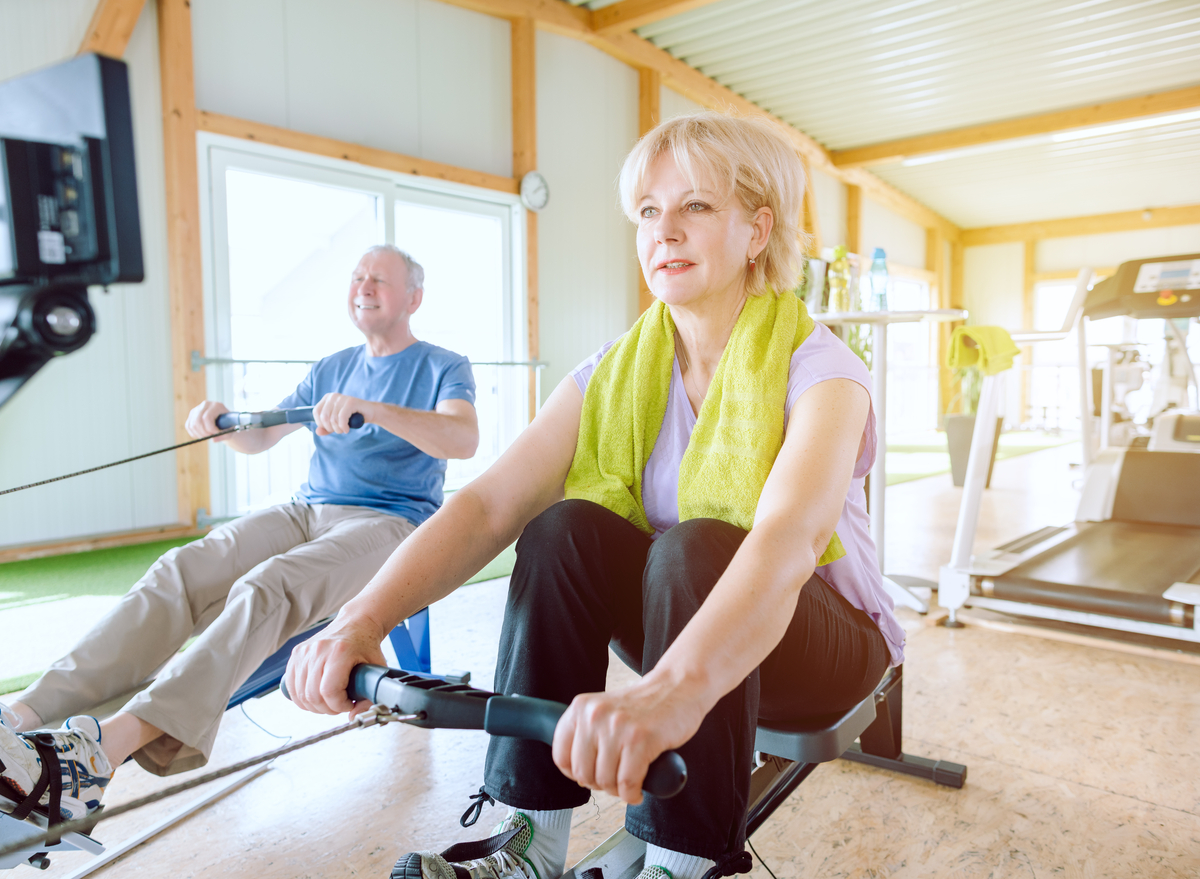
Don’t make the mistake of assuming intense exercise is reserved solely for the young. While every individual should absolutely consult their doctor and consider their personal limitations before engaging in any type of ambitious or overly intense exercise regimen, there’s scientific reason to believe that the occasional high-intensity workout can be advantageous for older adults.
To start, a new study released in the European Heart Journal concludes that moderate-to-vigorous exercise (lifting weights, jogging, HIIT) is the best type of exercise for getting fitter and healthier. Researchers report that this type of movement is three times more efficient at building personal fitness than just walking and 14 times better than just reducing time spent sedentary in general.
Further research from the Cleveland Clinic tells us that intense exercise is also beneficial from a heart health perspective for older adults. Study authors explain that exercise can benefit the heart at any age, but stress that it’s a good idea to start slow and gradually build up to more intense workouts.
“We were able to find that in people who performed high-intensity exercise, that it actually preserved the filling-function of the heart, more than it did in people who had moderate-intensity exercise or lower-intensity exercise,” says study author Chete Eze-Nliam, M.D., MPH. “As you start exercising, you start to build up your strength, and the body gets used to a level of exercise. After a while, you find out you’ll be able to step it up a bit, and overall, the more you can do, the better, within the confines of the limitations that you may have. I always advise to first check with your doctor before starting an exercise regimen.”
Meanwhile, another study published in the British Medical Journal, while preliminary, concludes that exercise intensity is not linked with mortality risk among older adults.
Related: This 15-Minute Workout Can Add Years to Your Life
Exercise in a group

Some people are natural loners, but at the end of the day all humans need at least a little bit of social contact. For older adults looking to up their fitness game, finding a friend or two to work out with can go a long way toward exercise success.
This study published in the International Journal of Behavioral Nutrition and Physical Activity concludes social support is positively associated with more leisure-time physical activity among older individuals. Similarly, research released in BMC Geriatrics concludes “regular group exercise contributes to balanced health in older adults.”
One notable research project released in the Journal of Social Sciences also finds that people tend to emulate the fitness and exercise habits of their friends and family. So choose your fitness-minded friends wisely!
For more, try these 4 Exercise Tricks for Slimming Down after 50.